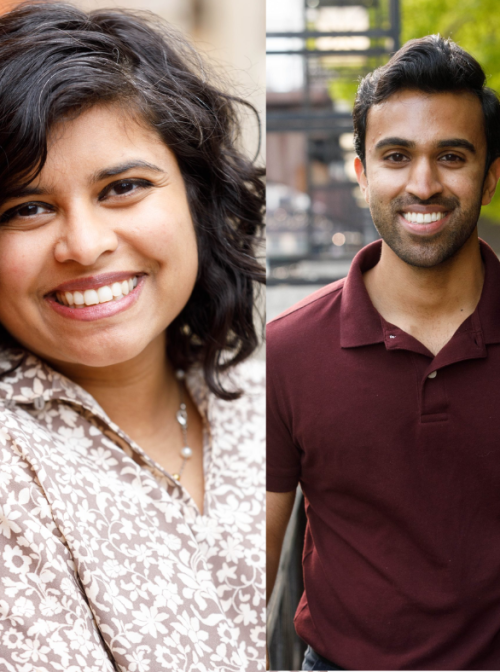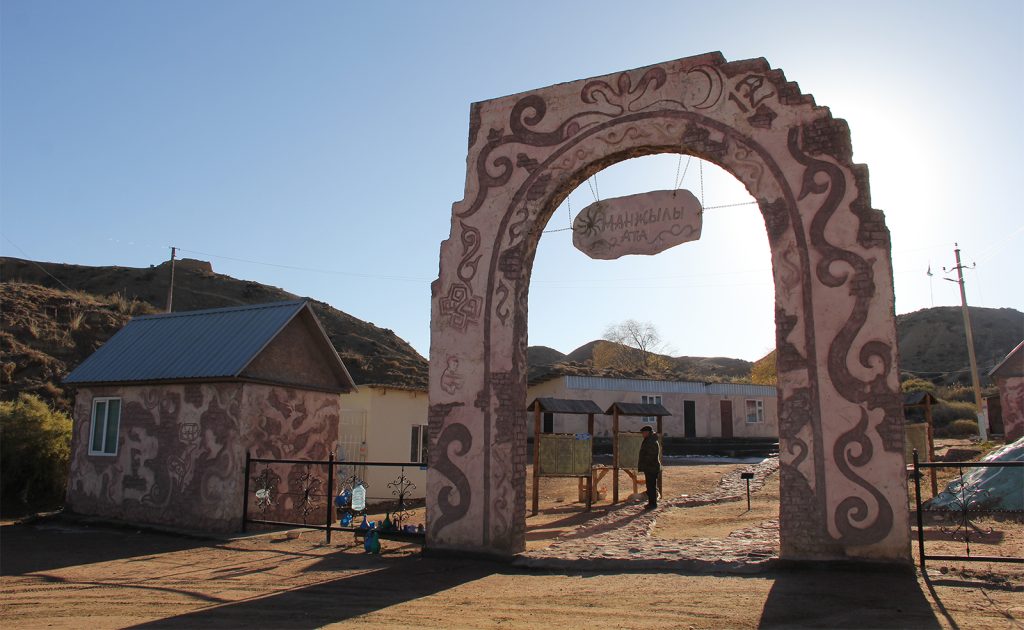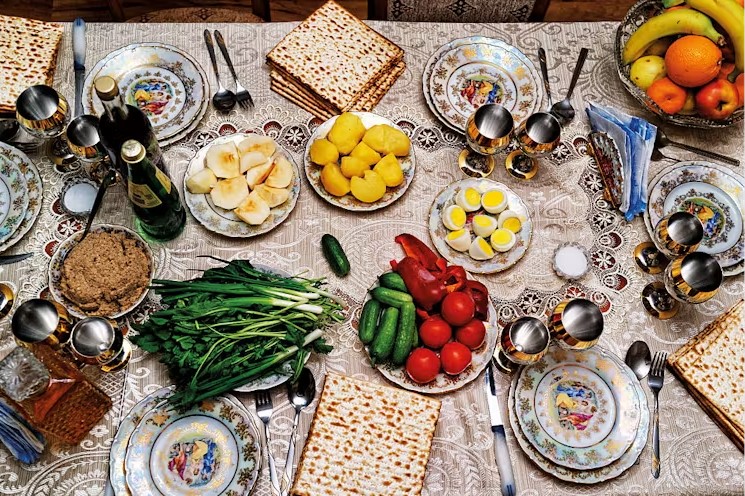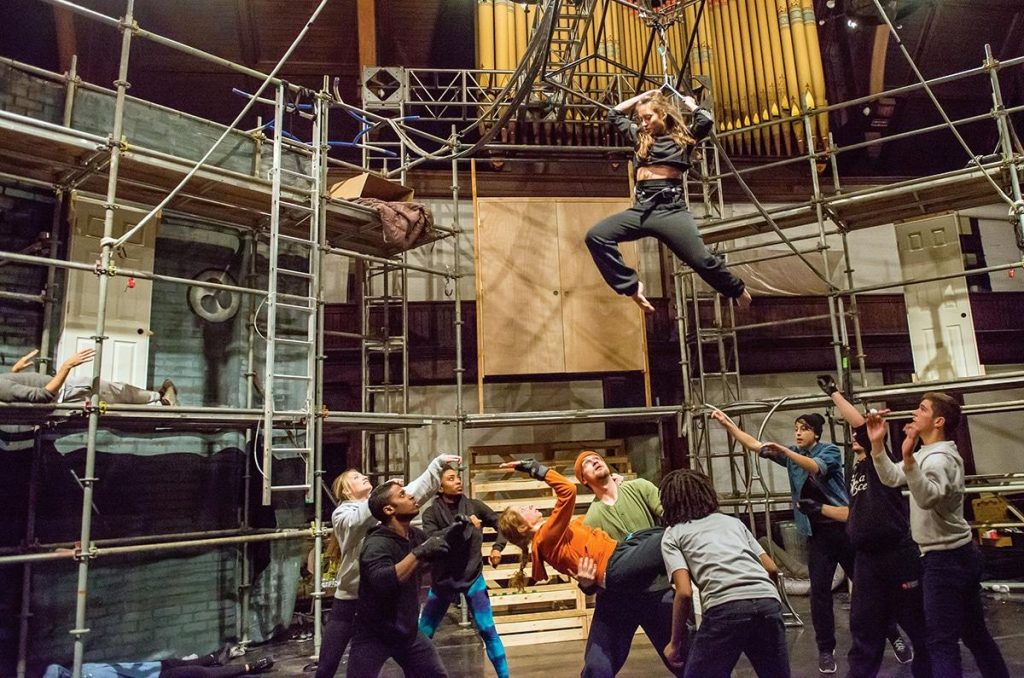Family holds a unique significance for many Indian Americans, especially considering the geographical spread of relatives across multiple nations. With most of the relatives living in India and those in the United States scattered across the country, nurturing a sense of family becomes vital.
This physical separation also shapes the religious identities of Indian Americans or children of immigrants in general. Given the challenges of balancing multiple cultural identities, questions arise: do we maintain the same religiosity as our parents? Do we forge our spiritual paths? Or could we find a combination of the two?
As cousins and interfaith leaders, we sat together to reflect on these questions. We discuss our childhood experiences with Hinduism and explore how our relationship with religion evolved as we transitioned into adulthood, particularly from an Indian American context.
The following conversation has been edited for clarity and length.
Anu Gorukanti: I’m excited about this conversation. I’d love to hear about your childhood experiences with religion.
Suraj Arshanapally: When my parents first moved to Springfield, Illinois, there wasn’t an established Hindu community. My parents’ Baha’i friends welcomed us into their community, which was my first interfaith experience.
Later, there were more resources for Hindu families in Springfield. I attended Bala Vihar, a Sunday school-like gathering for Hindu children. Parents within our Hindu community would teach us about Hinduism, including the stories, texts, values, and prayers. It was an excellent way to be in a community with other Hindus and learn about the religion my parents grew up with.
What were your first religious experiences like?
Anu: I moved a lot growing up and lived in many different places across the U.S. Throughout that time, I didn’t have any consistent education on Hinduism. We always had an area in our house where all the Hindu gods and statues were displayed, and that’s where we did poojas (religious services). I watched the Mahabharata (a Hindu mythological story) on DVDs growing up because that’s something that my dad was interested in. That’s how I learned about the Bhagavad Gita and some Hindu texts. We didn’t celebrate holidays like Diwali or Sankranti growing up, as many other Indian kids did.
Suraj: We both grew up in the Midwest, yet our experiences seem to have varied significantly. Hindu and Indian holidays were a significant part of my religious and cultural experience growing up.
We would attend community celebrations like Diwali, Sankranti, Ugadi, and Raksha Bandhan every year. These holidays brought the entire Indian community in Springfield together. Various groups across the community would choreograph dances, and there would be a buffet of food for people to gather, eat, and connect.
I know you moved around different cities in the Midwest growing up. Did your exposure to Hinduism change as you progressed?
Anu: When I moved to Arkansas, I no longer had Indian or Hindu friends my age. But we did have a small Indian Hindu community of adults with whom my parents were friends. We would have Bhajans (spiritual singing) and poojas together; we would wear Indian clothes and eat Indian food together. It kept us in touch with that part of who we were.
Moving to Arkansas began my exposure to interfaith work. Being one of the few Hindu people in my school meant having to navigate those conversations about what it meant to practice a non-Abrahamic faith tradition. I held a completely different set of religious beliefs than the people around me and it brought up a lot of very challenging conversations.
Suraj: Even though there was a significant Indian community in Springfield, my school, network of friends, and general socialization experience was based primarily on American customs and traditions. Hinduism and Indian culture happened only during moments of celebration for me. It needed to be integrated into my daily life without language and cultural barriers. Growing up, I often felt like I was in between cultures. Do you have a similar relationship with Hinduism?
Anu: I felt disconnected from the religion because a lot of what I was doing were rituals and prayers, but they didn’t have any personal significance to me. The language barrier was challenging because many rites and prayers were not in English, and it felt hard to be deeply connected to reciting things I didn’t understand. Around that time, I also started my own spiritual exploration and was trying to figure out my relationship and identity to Hinduism.
Suraj: I realized that Hinduism played a significant role in my cultural upbringing, but not my philosophical viewpoints. I still found the values of community, service, justice, and empathy integral to my worldview though.
I eventually came across Agnosticism, a belief that acknowledges the ultimate reality as unknown. Identifying as an Agnostic allowed me to embark on a quest for knowledge and understanding. I conversed with different types of people and deepened my experience of religion and worldviews. I now identify as Agnostic, while still acknowledging the cultural influence Hinduism played in my life. I’m curious how your worldview has changed over time.
Anu: Being in Arkansas challenged me to figure out what I believe, especially since I had so many experiences where people were trying to convert me to a different faith tradition. In trying to explain why their faith didn’t resonate with me, I had to figure out what I believed. Ultimately, it kickstarted my religious identity search early.
Suraj: Being asked to convert to another religion consistently must invite many questions about your identity and belief system. What did you do to engage in this search?
Anu: I read many spiritual books on Hinduism, Buddhism, and Eastern faiths. I read Siddhartha, an influential book for me, and started reading the Mahabharata. As I was reading those texts, while simultaneously reading the Bible to be in conversation with people around me, I realized that there was a lot of overlap or similarity in the calls for justice and service between many of these faiths.
Suraj: Your study of various religious texts is inspiring. I can see why you were drawn to interfaith work in college.
Anu: When I started college, I started interfaith work immediately because I felt it was essential for the world and my understanding of self and identity.
When I was a college sophomore, I discovered Thich Nhat Hahn’s writing and started to dive deeply into Buddhism. I started meditating, studying mindfulness, and reading many Buddhist texts. Around that time, I realized that I had a blended worldview encompassing both perspectives from Buddhism and Hinduism, which overlap in many ways and are distinct in other ways. I still love reading texts from contemplative scholars across faiths because I learn so much from how different communities think about living a moral life.
Suraj: Finding meaning was an aspect of religion that I contemplated often too. I learned that many people found solace in faith as it answered some of life’s more significant questions, such as the afterlife. I realized that I didn’t need answers to those questions. There was a beauty in embracing the unknown. Instead, I wanted to focus my worldview on how to make my life on Earth as community-oriented and meaningful as possible. That’s why I decided to work in the field of public health. The field of public health allows me to utilize my humanist worldview to remove barriers to positive community health outcomes, ultimately allowing people to live healthier and safer lives.
Can you share your worldview and your work?
Anu: My relationship with my spiritual beliefs has changed over the years and has been shaped by the suffering I witnessed throughout my medical training. I found the greatest solace in the Buddhist philosophy, which focuses on acknowledging suffering as a part of life. It doesn’t necessarily spend a lot of time trying to explain or justify why it happens.
When I started residency, I felt that my spiritual practices in both Hinduism and Buddhism were vital for helping me feel grounded amidst the crazy hours and tragic situations. In both traditions, there is a lot of discussion of how our life’s purpose is rooted in the service of others. It reminds me that the work that I’m doing is part of a much larger tapestry, and I can’t predict what’s going to happen in the future. I don’t have control over it, but I do have control over my actions. That has given me a lot of peace in my life.
It’s one of the reasons I’m very passionate about interfaith work because many different worldviews have the same calling.
Suraj: Engaging in interfaith conversations has taught me about nuance in identity. We are an excellent example as cousins. Our sets of parents share similar relationships to Hinduism; however, the places we grew up, the people we were surrounded with, and our sense of purpose influenced how our identities evolved. We are just two examples of the many diverse identities and experiences within the Hindu, Indian American, and AAPI communities.
Suraj Arshanapally, MPH, is an Indian American peacebuilder, public health advocate, and storyteller. He started The Multicultural Man to amplify culturally diverse stories of masculinity that promote health and peace. He is also the Managing Editor for the CDC Yellow Book, an international travel medicine publication at the Centers for Disease Control and Prevention. Suraj received his MPH in Social and Behavioral Sciences from Yale University. He believes multiculturalism and interfaith cooperation are crucial to building a healthy and peaceful society.
Suraj Arshanapally wrote this article in his personal capacity. The opinions expressed in this article are the author’s own and do not reflect the view of the Centers for Disease Control and Prevention, the Department of Health and Human Services, Interfaith America, or the United States government.
Anu Gorukanti, MD, is a public health practitioner and pediatric hospitalist. She is also the co-founder of Introspective Spaces, a social venture committed to building reflective space and community for women in healthcare. She was a member of the Sacred Journeys and Witness fellowships. She cares deeply about the well-being of her colleagues in healthcare and is passionate about healthcare reform to create equitable and compassionate care for patients and communities. In her free time, she loves to photograph landscapes, learn to dance, and spend time with her wonderful husband, friends, and family.




